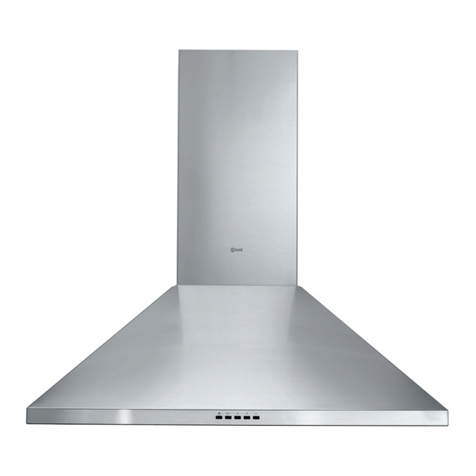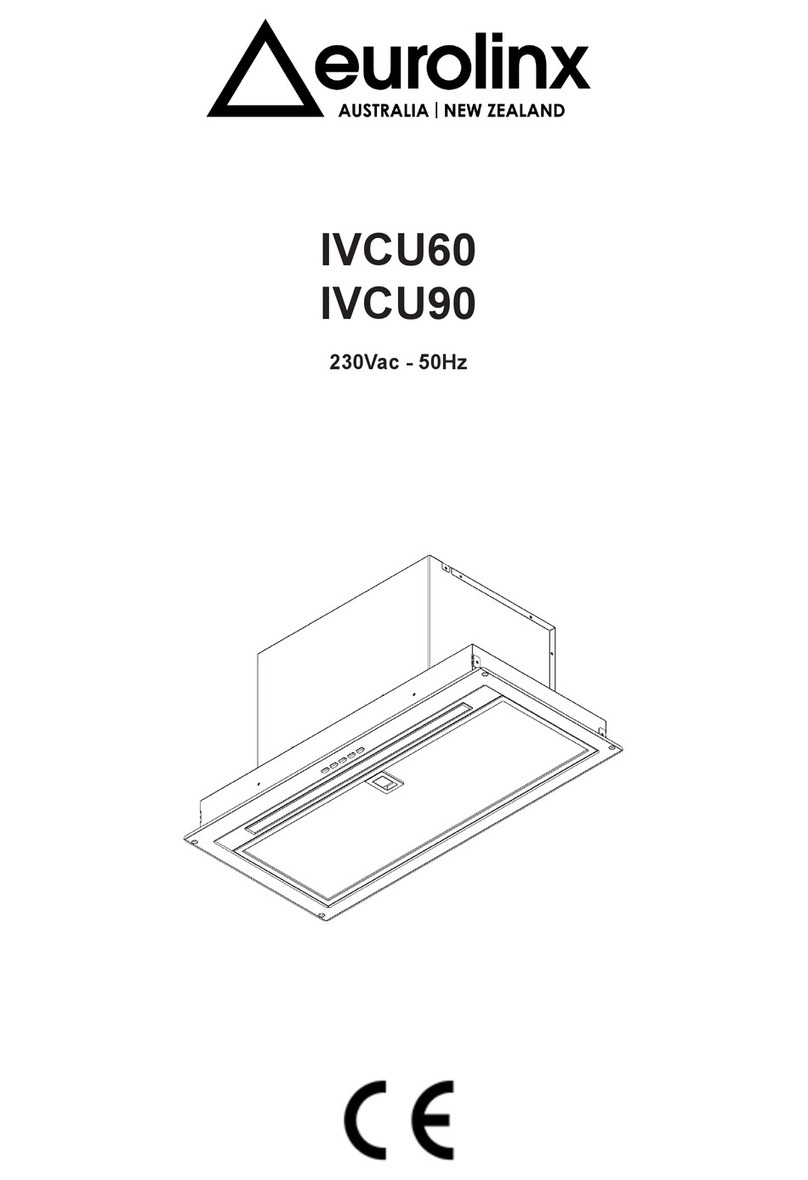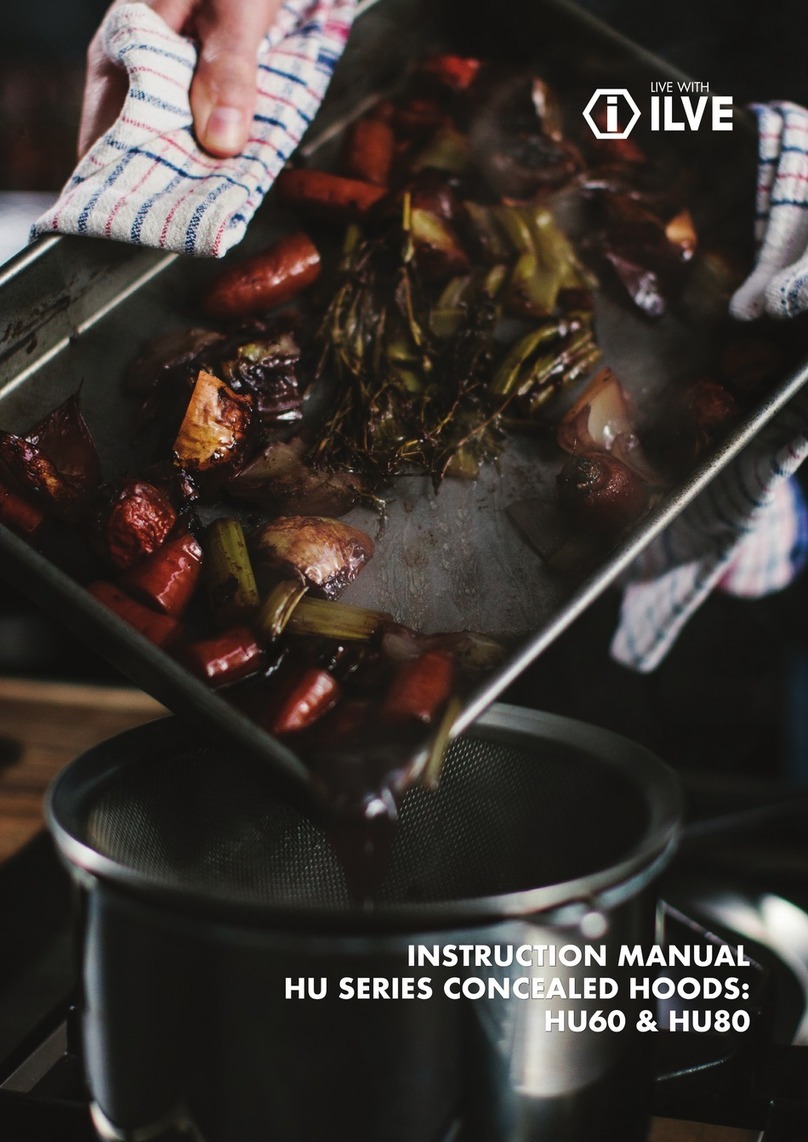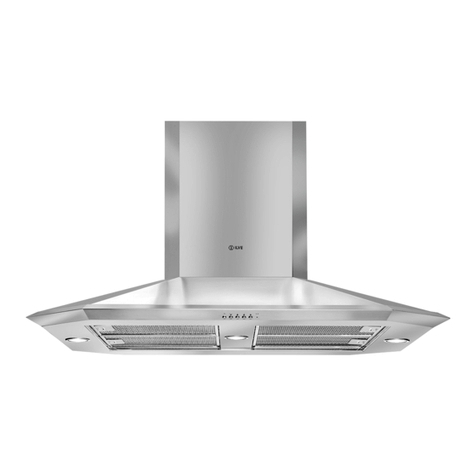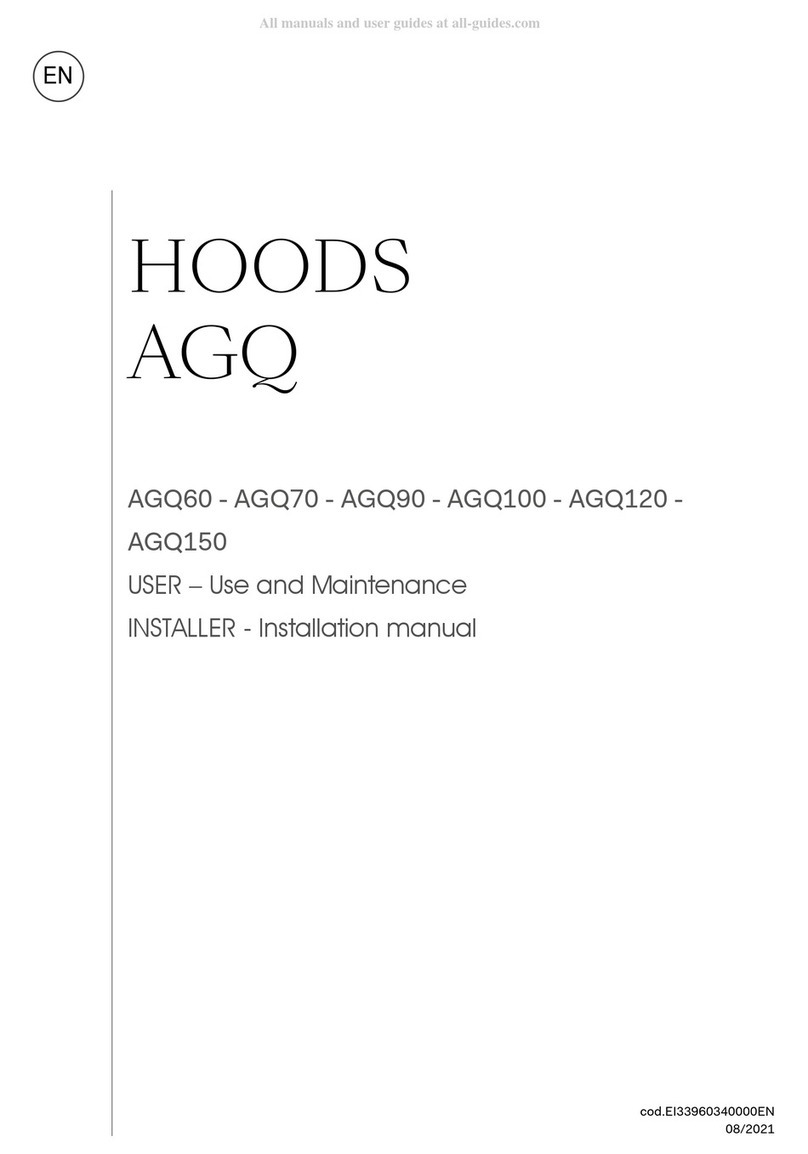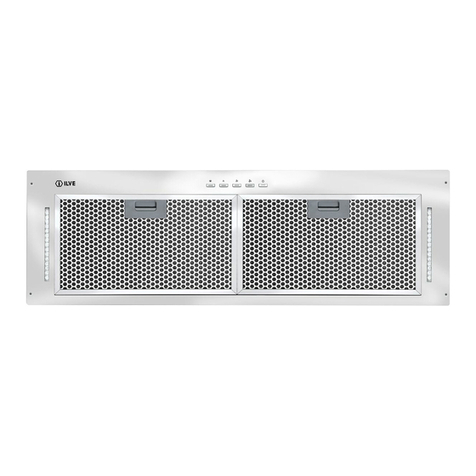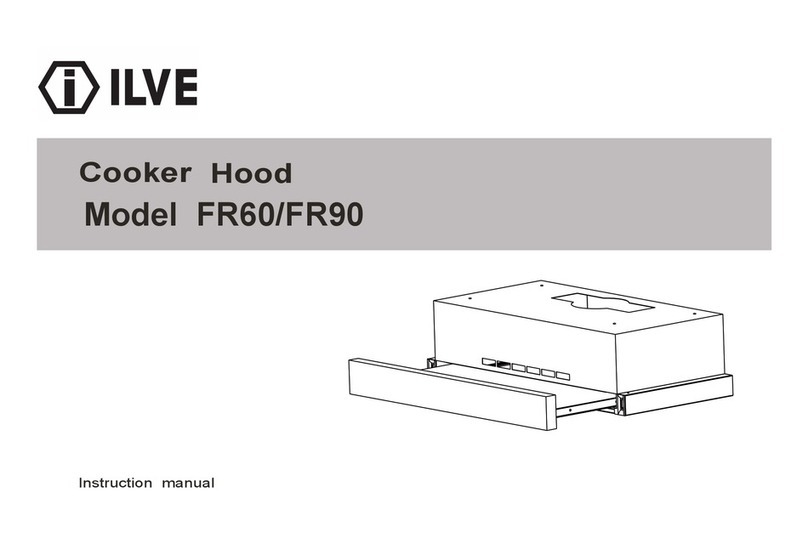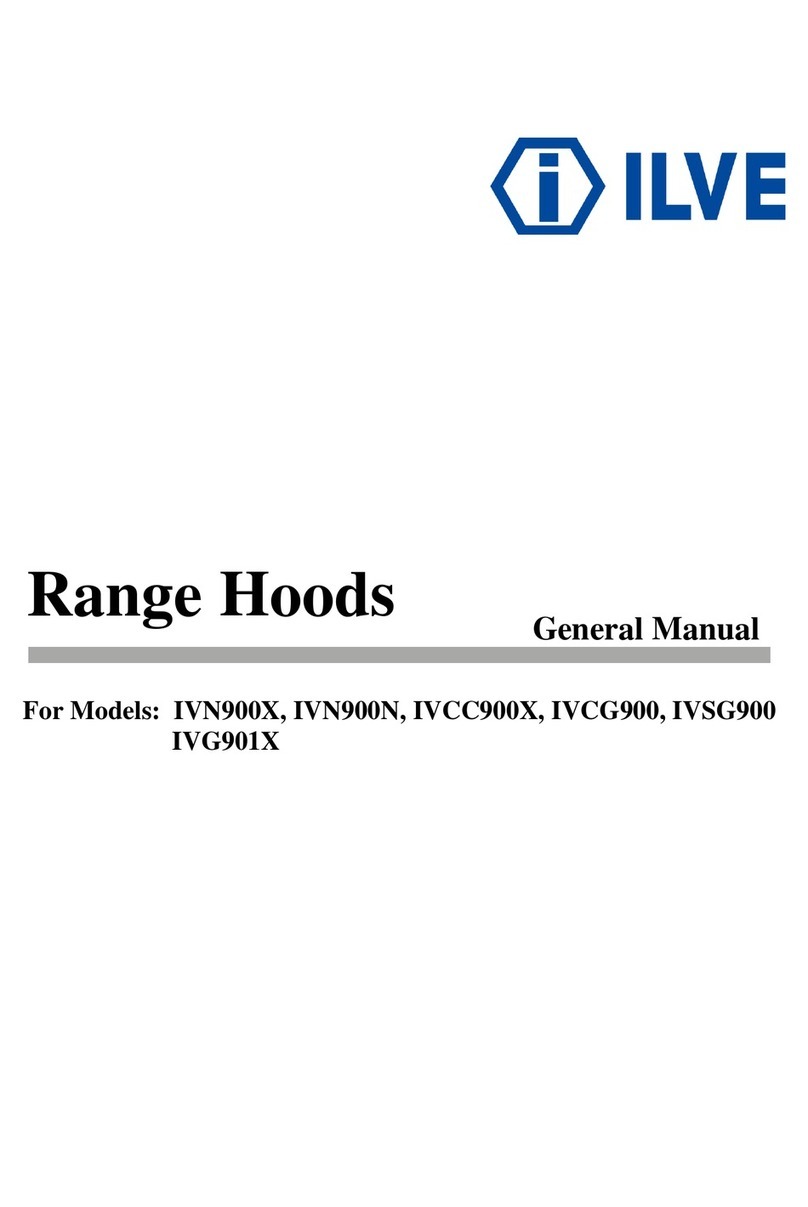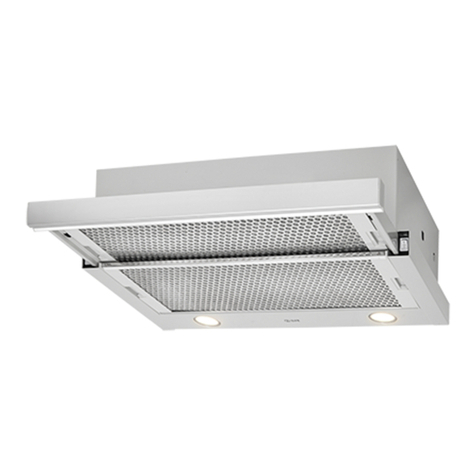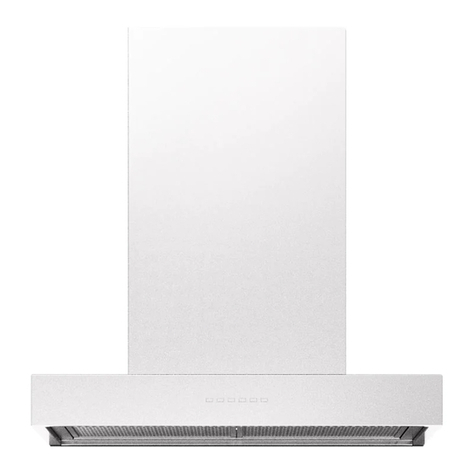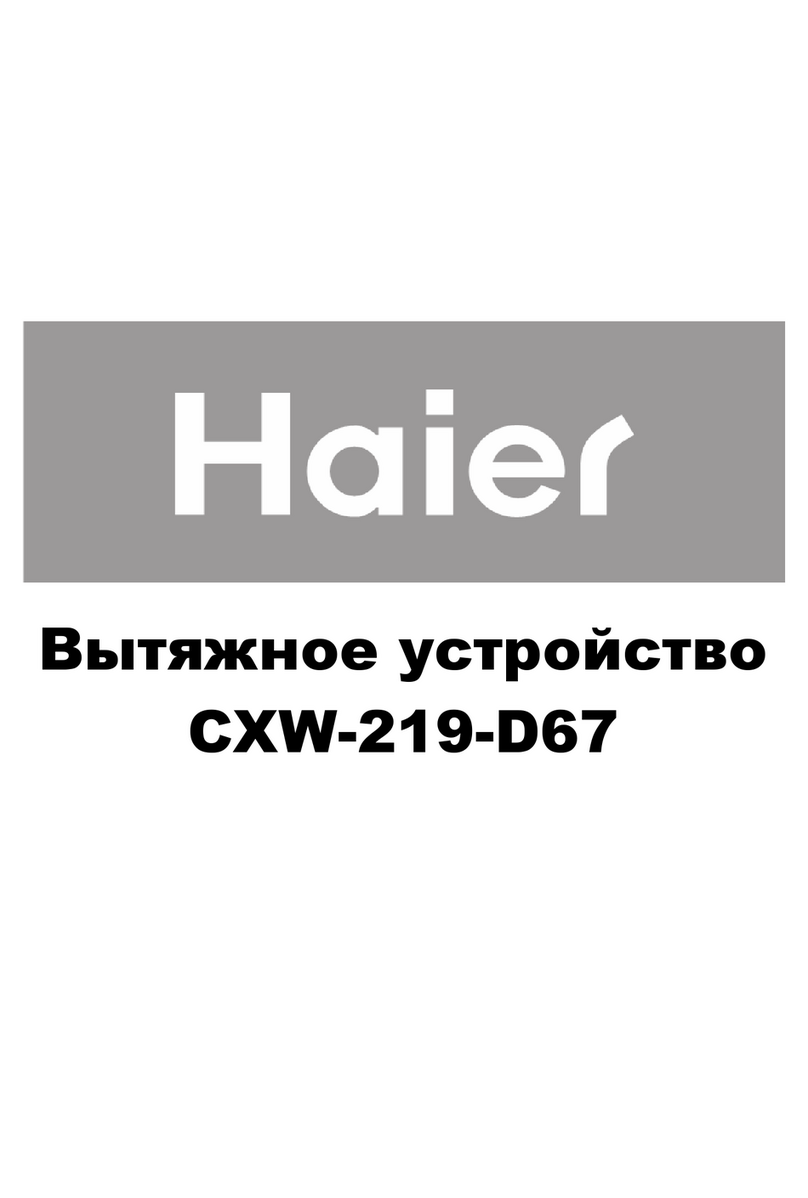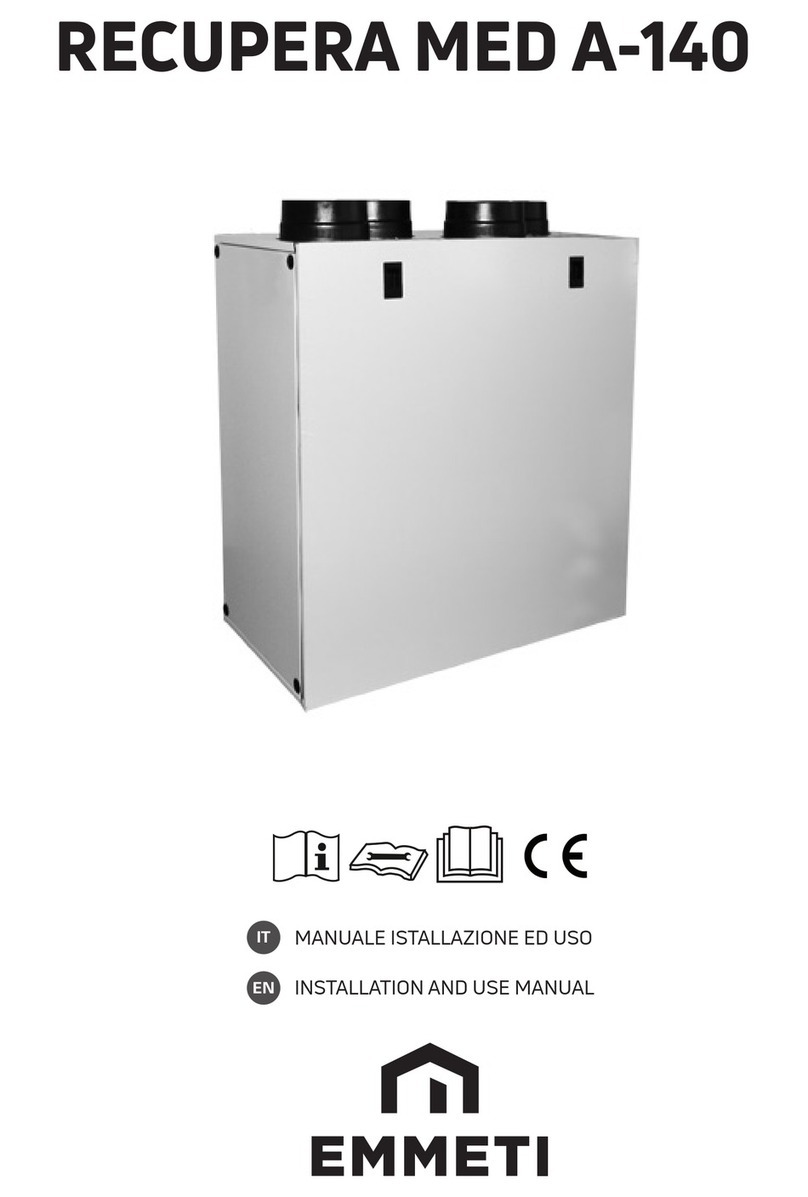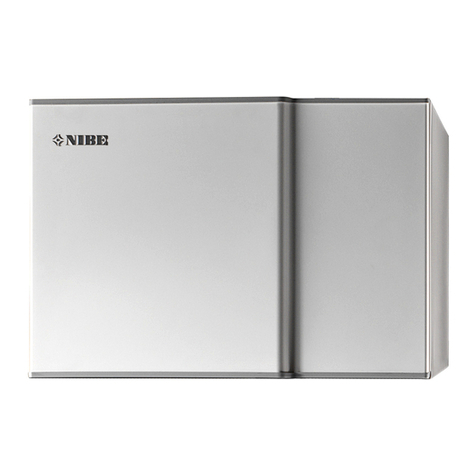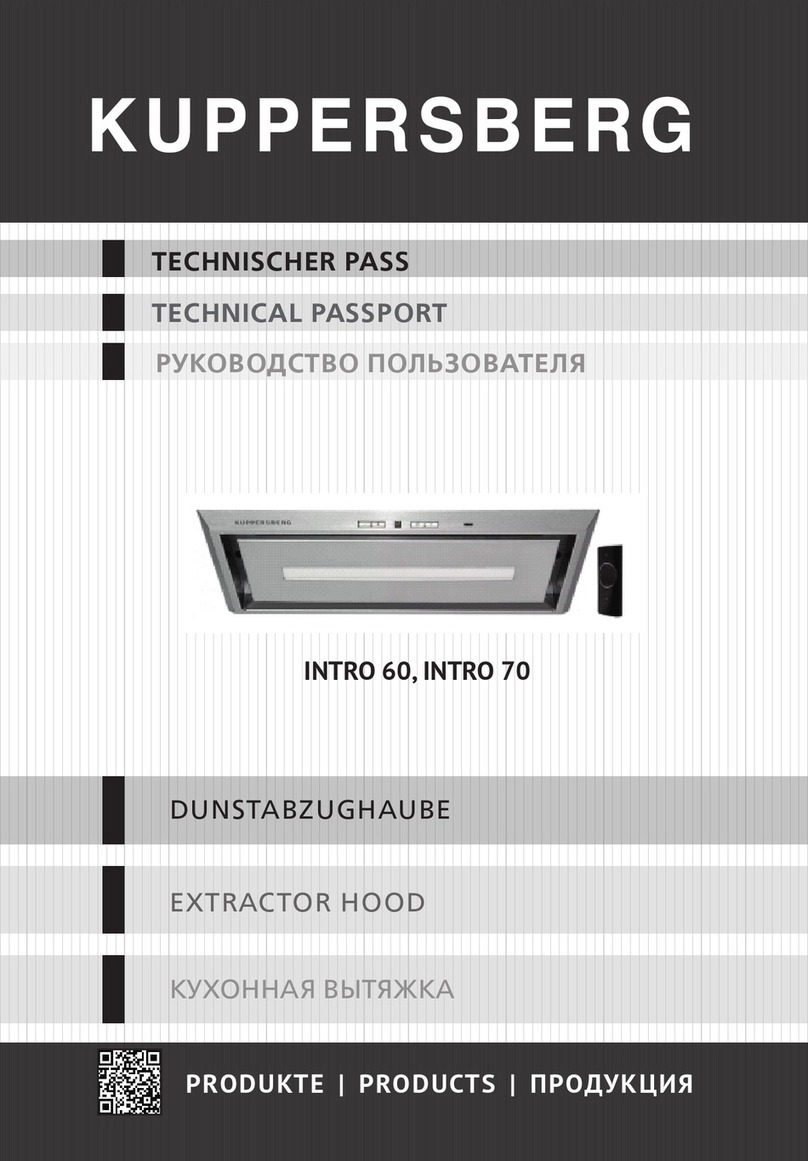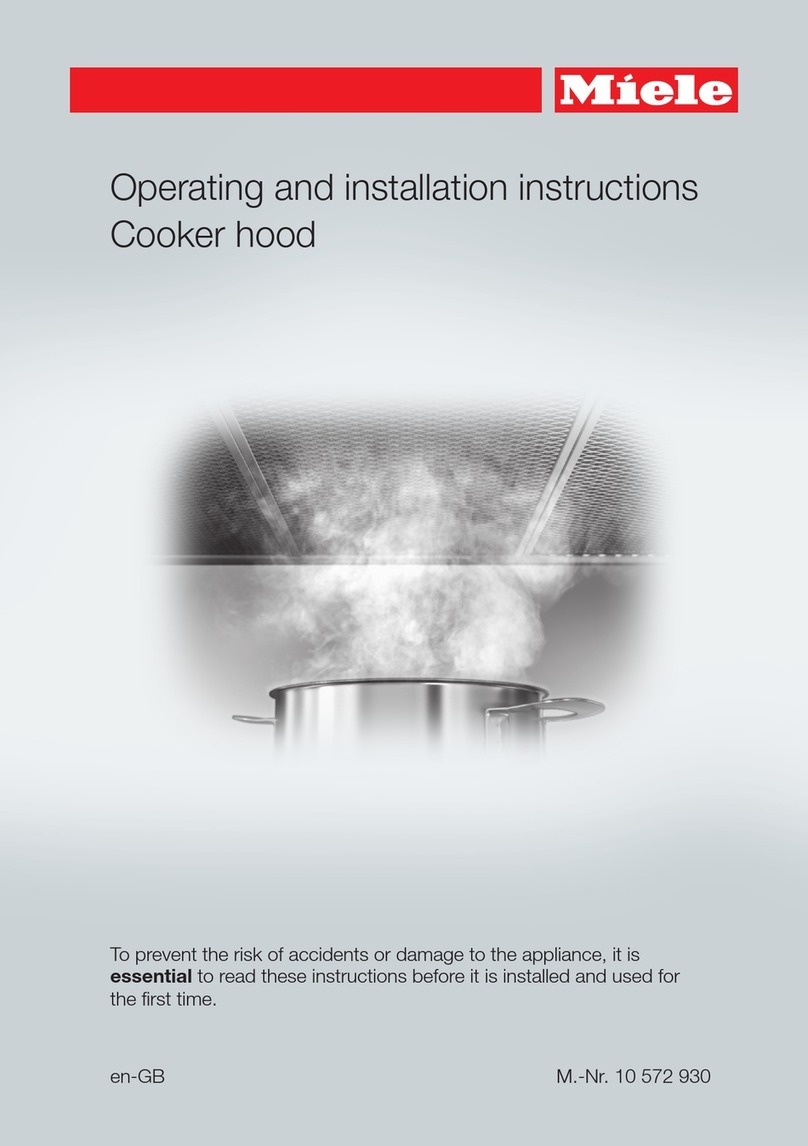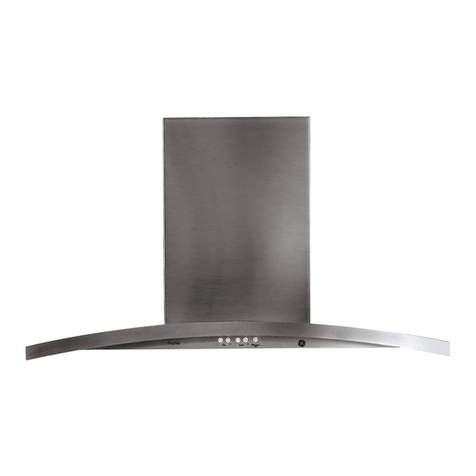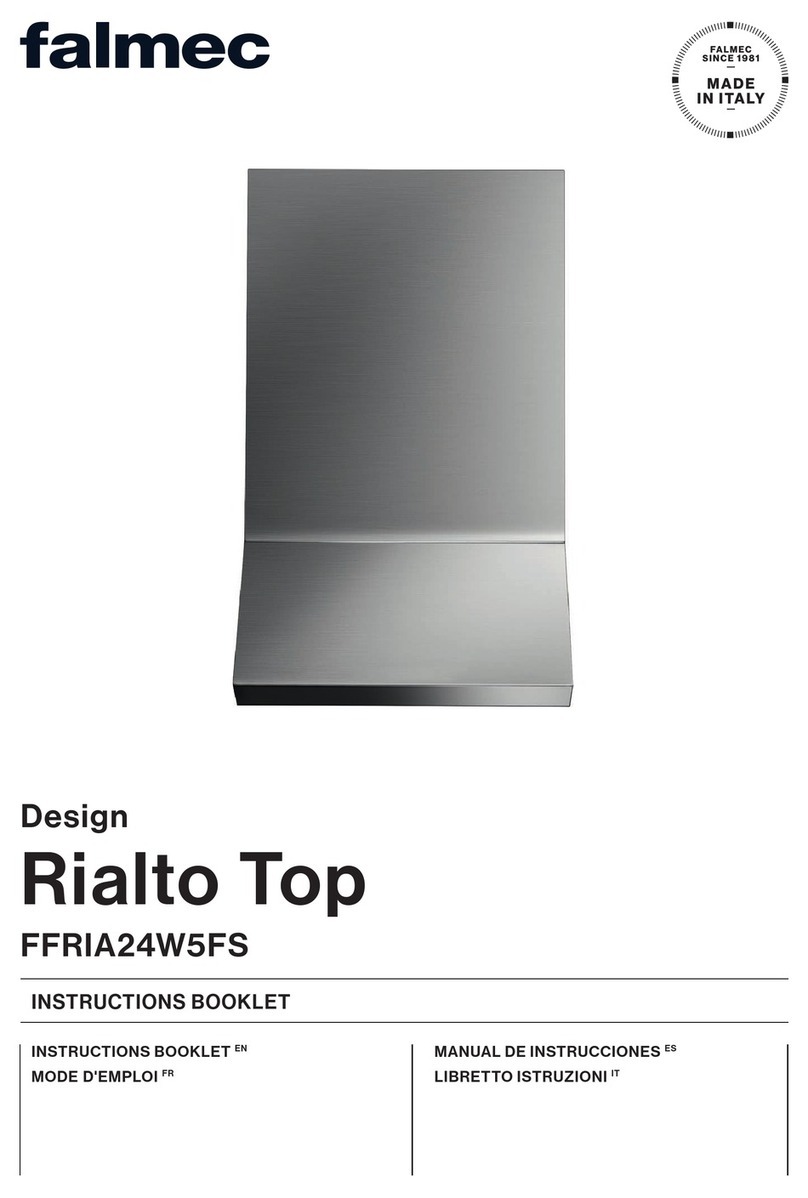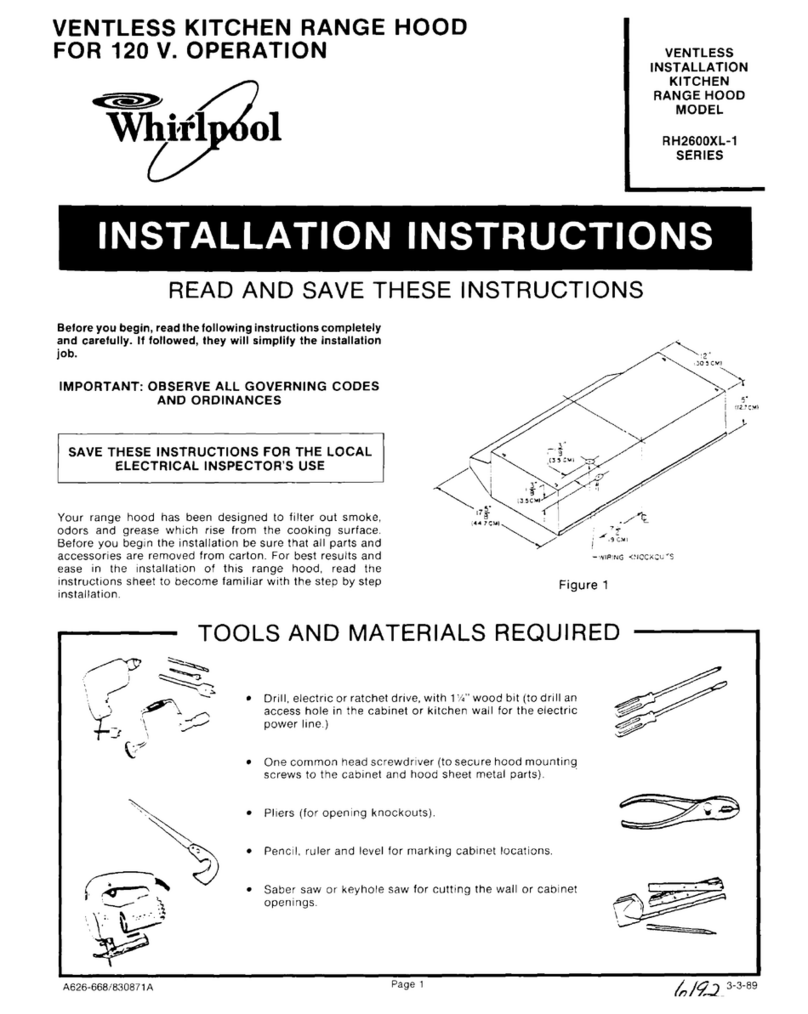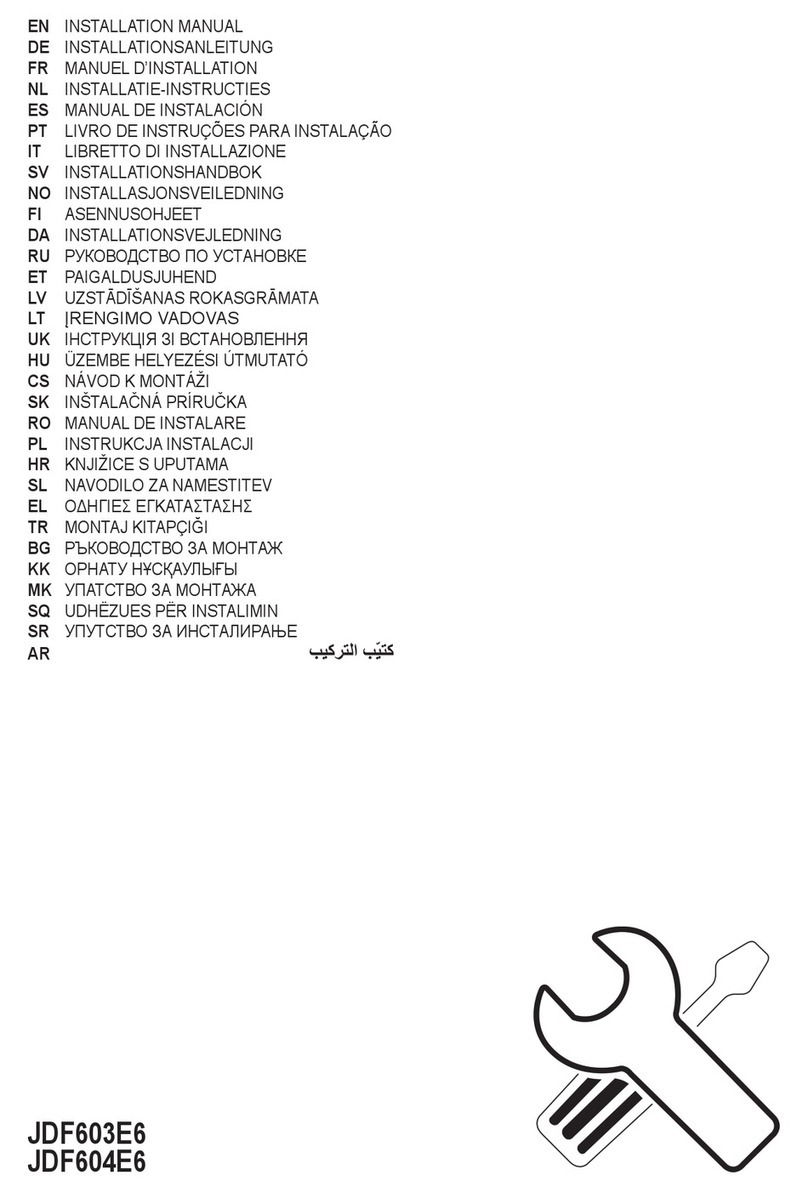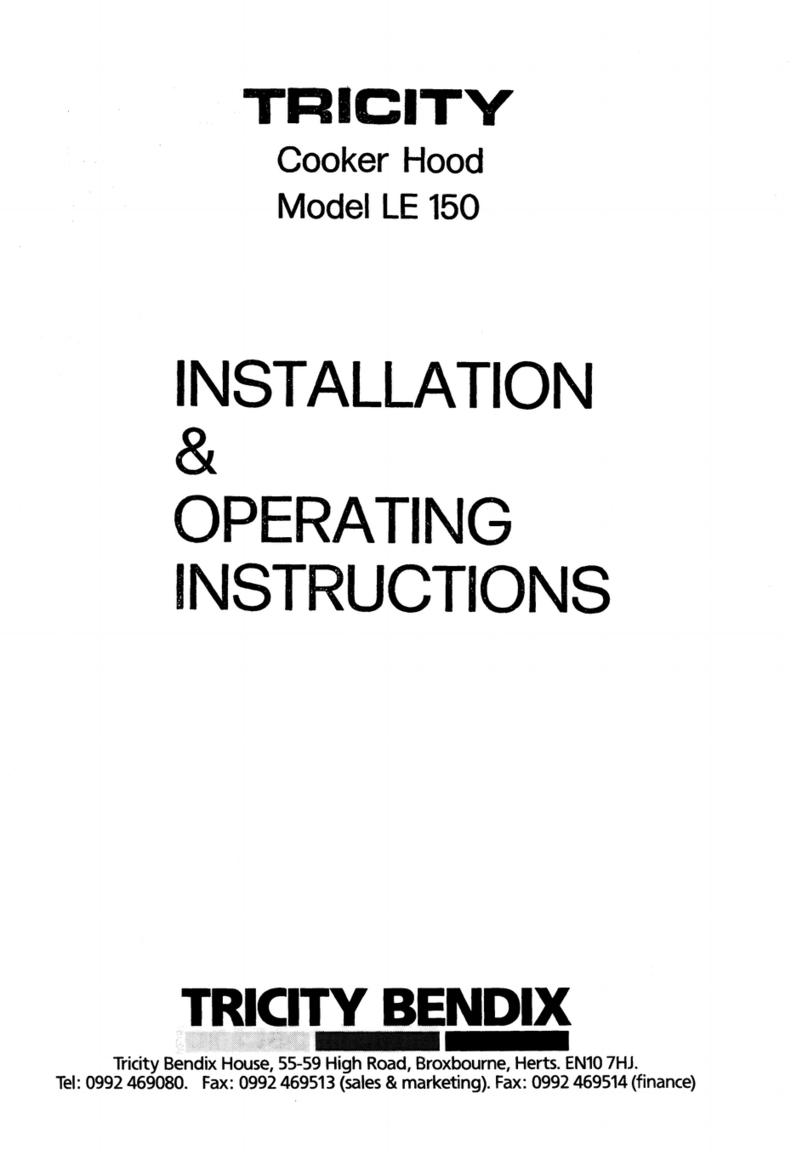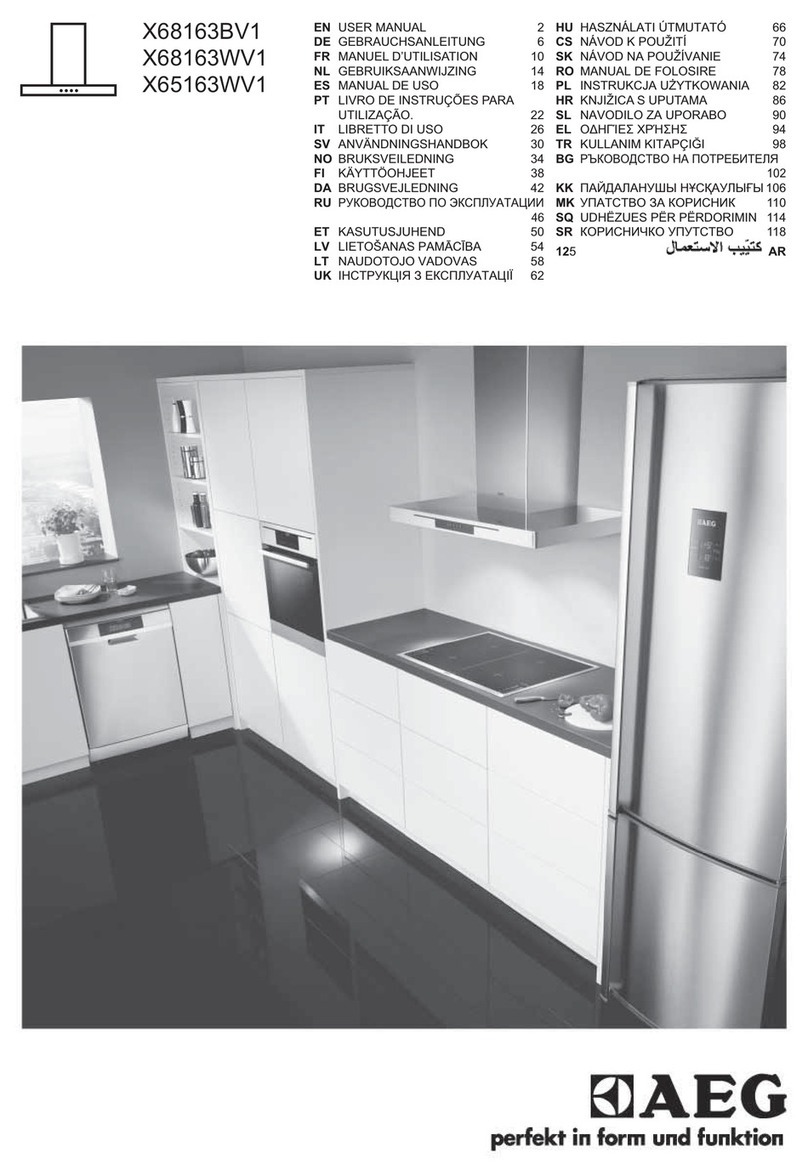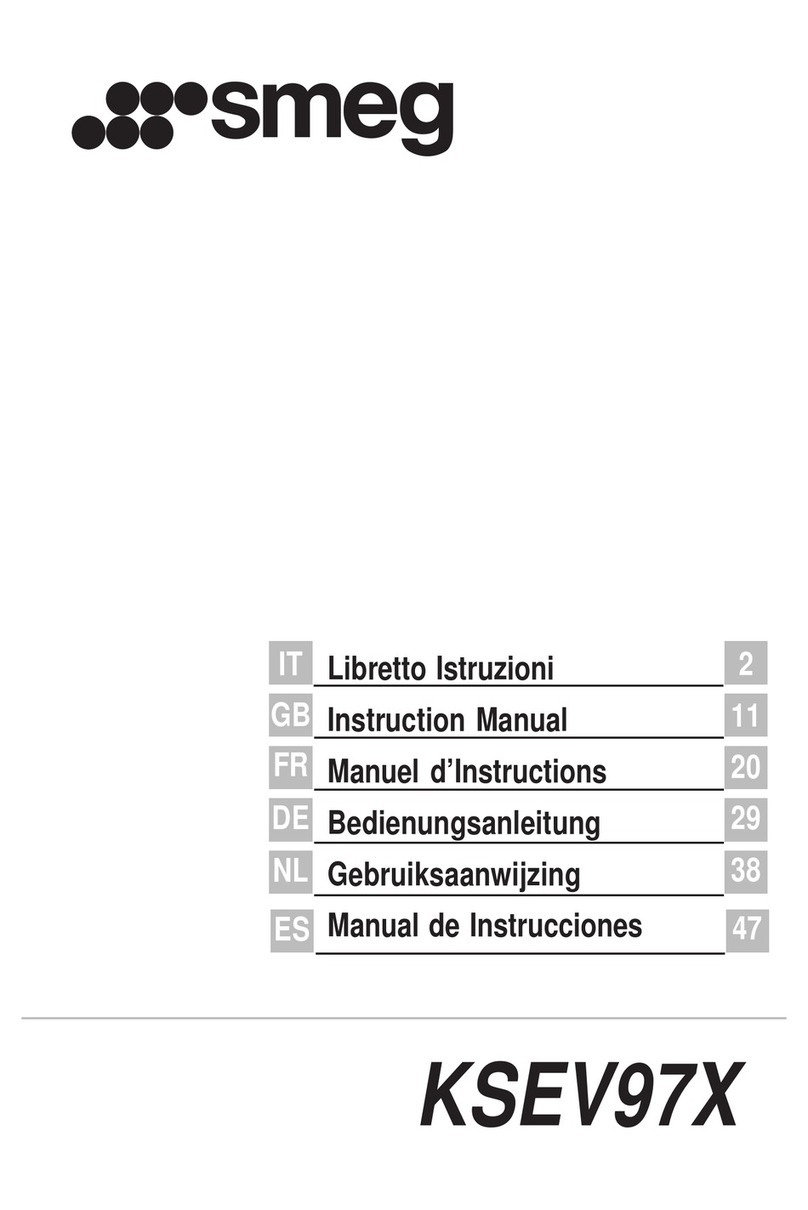
Exhausting cooker hood. The equipment is constructed in
accordance with European Standards and with the requirements
included in the following Directives: 2006/95EC ( Low Voltage
Directive), 2004/108 (Electromagnetic Compatibility).
1 INSTALLATION
Read the whole instruction booklet before installing and/or using
the hood.
With the hood correctly installed, the minimum distance between
the wall-mounted unit and the cooking surface of a gas stove
must be at least 62 cm.
With the hood correctly installed, the minimum distance between
the wall-mounted unit and the cooking surface of an induction
cooker must be at least 50 cm.
Please comply with all the regulations regarding air discharge.
The air must never be discharged into a duct used to discharge
the fumes produced by gas combustion appliances (not
applicable to hoods used in ltering mode).
The room must have sufcient ventilation when the hood is used
together with other appliances that use gas or other fuel.
During installation, we recommend you move the units
underneath it for better accessibility.
The hood is supplied with all the xings required to install it,
suitable for most wall units. Check anyway that the surface of the
wall units is adequate.
Installation must be carried out by competent and qualied
installers in compliance with the regulations in force.
The hood is provided with a plastic back spacer to adapt its depth
to that of the wall unit (from 30 to 35 cm). Proceed measuring the
depth of the wall unit side “X” (Fig. 1), deduct from this value the
depth of the hood that is 30cm. The difference is depth “A” (Fig.
1), the distance the spacer will have to be cut at with a cutter. If
the wall unit depth is 30 cm, no spacer is required.
At this point, x the already cut spacer to the hood (Fig. 2).
Fix the two brackets supplied to the unit internal walls, complying
with the distances shown (Fig. 3).
Insert the hood from the front; use the previously xed brackets
as guides that must be inside the seat located on the hood sides
(Fig. 4).
After positioning the hood correctly, x it to the guides with the 4
screws supplied (Fig. 5).
2 ELECTRICAL CONNECTIONS
This appliance must be connected to an earthed system.
Two types of connection to the network are possible:
With a standard plug connected to the mains cable and
inserted in an accessible system socket (that can be
disconnected during maintenance). Ensure the plug is
accessible also once the installation is completed.
Via a xed connection to the mains, placing in-between a
bipolar switch ensuring disconnection from the mains, with
a distance in the contact opening that allows complete
disconnection from the mains in the conditions of
overvoltage category III, in compliance with the installation
regulations. The earth connection (yellow-green wire)
must not be interrupted.
For voltages and frequency, check the data plate inside
the appliance.
If the power cable is damaged, it must be replaced by the
manufacturer or by its technical service centre or, anyway,
by a qualied person, in order to prevent any risk.
3 USE
This hood can be used in extracting or ltering mode.
Extracting (expulsion to the outside). Kitchen fumes are
expelled through the piping (not supplied with the hood)
connected to the motor discharge.
The piping must never be connected to combustion discharge
pipes (stoves, boilers, burners, etc.).
The use of long pipes, with many bends, corrugated and with a
diameter smaller than the motor outlet’s will cause a decrease in
extracting performance and an increase in noise.
Filtering (recycling). The fumes pass through the carbon
anti-odour lter (not supplied with the hood) to be puried and
recycled in the kitchen. The use of the carbon anti-odour lter
reduces the hood performance, we therefore recommend the
hood is installed in extracting mode.
4 OPERATION
This hood has been designed to prevent the formation
of condensation on its lower surfaces when it is installed
over an induction cooker.
Unlike a gas stove, an induction cooker heats only the
pans containing the food and not the surrounding area, so
the surfaces of the hood remain cold.
When the hot cooking fumes go up, they hit the hood cold
surfaces, condense and therefore release the humidity in
the air that quickly transforms into small water drops that
inevitably fall on the cooking surface and food, carrying
with them fat and impurities.
To prevent this from happening, all the lower surfaces of
the hood are heated by a system of internal and therefore
invisible resistors, so the hood lower surfaces getting
warm, even without switching the cooker on, is quite
normal and does not show that the product is not working
properly.
To switch the hood on, rst open the fume ap using the
relative handle in the lower part. Lightly pull downwards
and then extract ap “A” fully (Fig. 6). A special sensor will
automatically switch the hood off when you try and close
the ap with the hood on.
The controls consist of keys to switch the TL lamp on, to
switch speed one on and switch extractor T1 off, to select
the T2-T3-T4 running speeds and to activate the anti-
condensation function T5 (Fig. 7). The anti-condensation
function comes automatically on when the hood is switched
on with key T1, it can anyway be switched on and off with
key T5.
To switch the motor off, press T1 only once if the hood is
operating in 1st speed, twice if it is running at other speeds.
The internal fat lter is not heated to allow condensating
most of the humidity in the air, this surface will therefore
show some drops that are collected in a special tray.
This container should be emptied every time you nish
cooking. To empty the container, rst of all open fume ap
“A” (Fig. 6), with the hood switched off, pull lever “B” (Fig.
8), located in the back of condensate tray “C” downwards
INSTALLATION, OPERATING AND MAINTENANCE INSTRUCTIONS FOR COOKER HOOD H15 MODELS
230-240 Vac - 50 Hz

